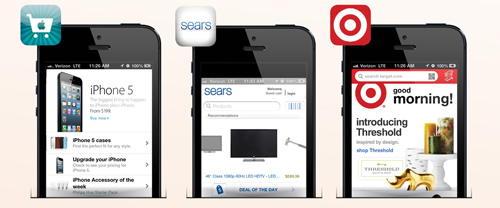The integrated shopping experience is taking over.
Today’s shoppers expect more than just an in-store browsing and buying opportunity. Shoppers want to see the integration of digital, mobile, location, social and physical stores. They want help finding and purchasing what they need through their computers, mobile phones and in-store customer service. This means showcasing what’s possible in social media, on your website, in the mobile environment, and in your store. An integrated experience also means watching and predicting behaviors in order to deliver products that delight and surprise, while also winning loyalty and inspiring buzz. In fact, creating personal and engaging experiences through all these mediums are currently the best way
to differentiate.
More than half of the U.S. population is on Facebook.
Technology is ready to help brands differentiate and it’s evolving quickly, thus offering lots of opportunity for innovation. But many businesses are not implementing an integrated approach. For example, more than half of the U.S. population is on Facebook and just less than half of Facebook users engage with brands in the space. These numbers are high and yet many brands are still not taking advantage of the opportunity. Others are simply failing to provide a consistent experience across platforms (Web, mobile, social), and, thus, are not living up to the expectations of their customers.
A consistent message needs to be shared in all spaces or else shoppers can get confused.
At the same time, an integrated experience is more than just being present in various physical, digital and mobile spaces. A consistent message needs to be shared in all spaces or else shoppers can get confused. According to recent research by mBuys, 85 percent of people want an integrated shopping experience and only 50 percent feel they get one. In addition, both the approach and message need to be consumer-centric. Many brands, particularly retail brands, are still product-centric. The essential question becomes, how can the brand make the shopping experience easier for its customers? Digital and mobile opportunities that are integrated and consistent can help people find what they are looking for, understand how it will meet their needs, and pay a price they feel is fair.
Some businesses are already known for their integrated experiences. For example, Apple is consistently identified as being successful with its integrated experience. In fact, Apple stores promote online purchases rather than discourage it and are seen by many as an important model for others to emulate. Also, the Apple mobile application is consistently ranked high for ease-of-use by comScore. Another brand striving for an integrated experience is Sears with “Shop Your Way”—an online and mobile experience that offers exclusive coupons, hidden values, mobile shopping, loyalty rewards, and social experiences with friends, such as chatting.
Any brand not planning for an integrated customer experience will have difficulty attracting new customers and enticing revisits in the near future. Thoughtful implementation is necessary, and all experiences need to relate back to the brand identity. Success metrics must be established and followed. When pre-established metrics recognize a portion of an integrated experience as less successful, it should be reevaluated and fixed.
Integrated shopping experiences are enjoyable for many shoppers. Offering clear and consistent messaging throughout those platforms will help them find your products and build affinity for your brand. Ignoring the integration opportunity, or executing without consistency, could detract some shoppers from your brand. As more and more people become active in social, mobile and digital realms, they will be looking for you and how you can improve their experience shopping. Consequently, make sure everyone can find you and enjoys your integrated experience.



